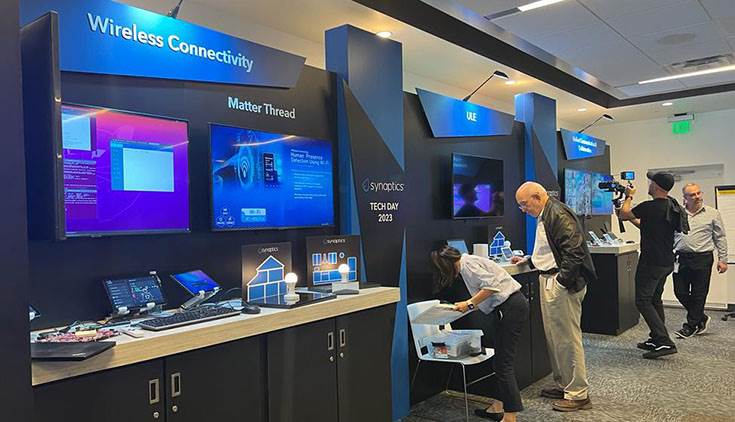US-based human-machine interface (HMI) and software solutions major Synaptics is supplying its touch-and-display integration (TDDI) driver in the latest range of cars from homegrown Tata Motors, which has recently introduced brand-new infotainment and digital instrument clusters on its updated Nexon, Harrier, and Safari models.
The Synaptics TDDI is an integrated solution where the display driver is responsible for lighting up the pixels on the screen and creating the image, whereas the touch sensor tracks the user’s touch inputs on the screen. “The TDDI is an integrated circuit that marries the touch controller with the display driver,” Michael Hurlston, CEO, Synaptics told Autocar Professional.
“We have a very good relationship with Tata Motors, which is using the TDDI in its most recently-introduced products,” he added.

Michael Hurlston, CEO, Synaptics: ““We have a very good relationship with Tata Motors. It is a fast-moving company, and we expect that we will be able to do very well with them over the course of the next 3-4 years.”
In September 2023, Tata Motors had introduced the updated Nexon EV with a brand-new Harman-developed 12.3-inch infotainment unit, which also made its way into the refreshed Harrier and SafariSUVs a month later in October. The three models also received a new 10.25-inch digital instrument cluster that is highly customisable, and offers display of relevant information, including navigation.
The Synaptics TDDI involves a high degree of analogue-circuit design and is therefore built on a mature semiconductor process node technology, in the 12 nanometres-and-above range. “Analogue circuits are typically built on mature process nodes as they do not perform well when designed on very small, advanced geometries. Analogue circuits suffer from a lot of signal-to-noise problem, and if one is dealing with advanced semiconductor geometries, it induces more noise, thereby making the design more difficult to achieve,” Hurlston explained.
The company has also come up with its innovative ‘SmartBridge’ local dimming sensor that enables an OLED-like contrast in an LCD panel. “The SmartBridge announced about six months ago, performs the bridging functionality in a display, while also adding a feature – local dimming,” he said.
“Local dimming increases the contrast ratio of a screen and allows OLED-like contrast in an LCD panel. This ensures significant cost savings for OEMs as an LCD panel is much cheaper as well as offers better longevity compared to an organic-LED,” he explained.
The company has showcased its latest innovation to its existing Indian customer – Tata Motors – which, it says, is currently evaluating the technology, making Synaptics hopeful of getting a design at some point in the future. “While our engagement with Tata Motors started on a small note, it is a fast-moving company, and we expect that we will be able to do very well with them over the course of the next 3-4 years. Our engagement with Tata Motors on the SmartBridge is ahead of most other automakers, simply because Tata Motors has been quite fast to innovate,” he said.

Synaptics bets big on wireless business in India
Synaptics, which had introduced the TDDI around two-and-a-half years ago, says it has grown this revenue stream to a level of around US$ 250 million in a short span. While automotive contributes around 20% of the overall revenue of the company which sees the US, China, India, and Europe as its key markets, Synaptics is targeting US$ 1 billion in revenues by 2028 purely from its wireless business, which is being led by India. The company’s entire innovation in wireless technology – WiFi and GPS – is coming solely out of its Bengaluru headquarter that houses its 400-member team. “We have attracted a lot of talent in India, and India will continue to be at the centre of the intellectual property universe for Synaptics. We expect to double our team over the next 3-4 years, and therefore, our footprint from an engineering investment standpoint is very much tilted toward India,” he said.
“Make-in-India forms a tremendous opportunity for our wireless connectivity products. While automotive is just one piece, there are several things happening in India. Therefore, pushing the Make-in-India envelope is going to be very good for the economy, and a great opportunity for Synaptics,” Hurlston signed off on a very confident note.
ALSO READ:
CY2024 to be year of inventory reduction for automotive chip suppliers: Synaptics CEO
